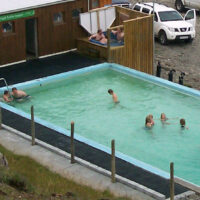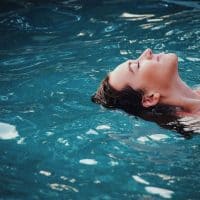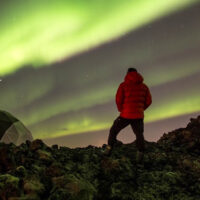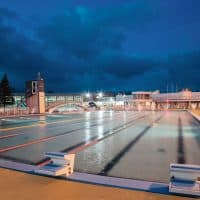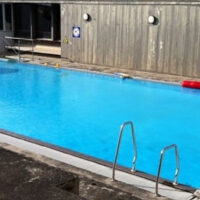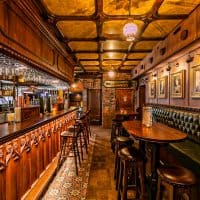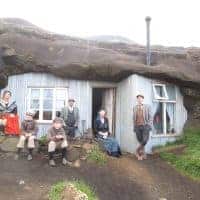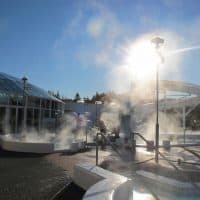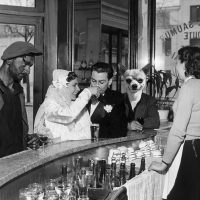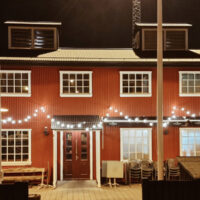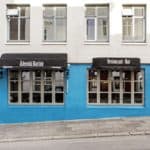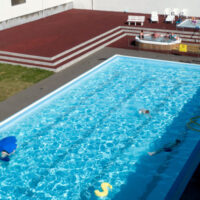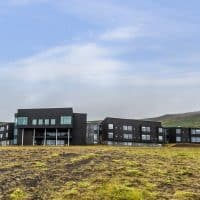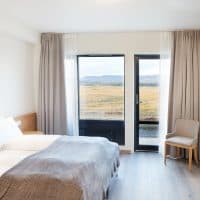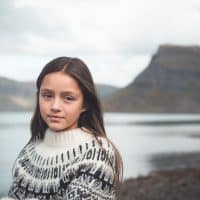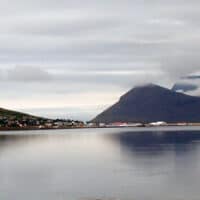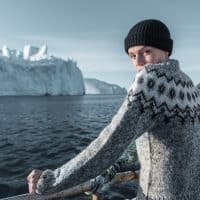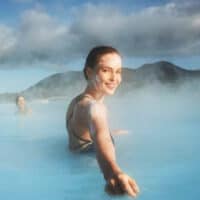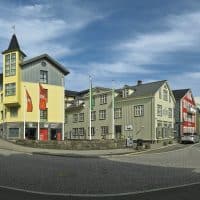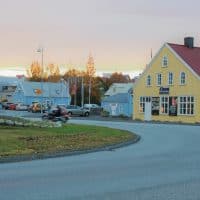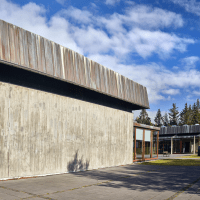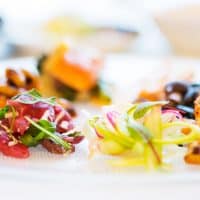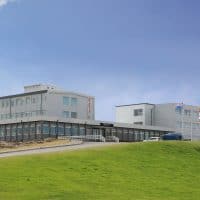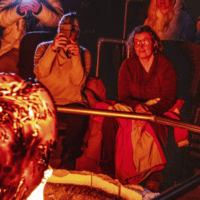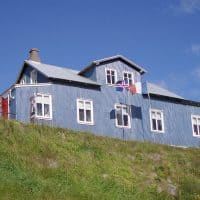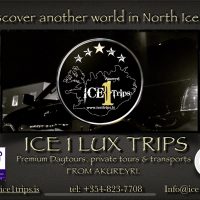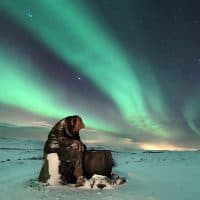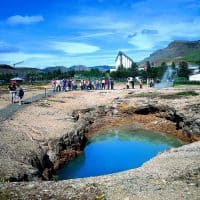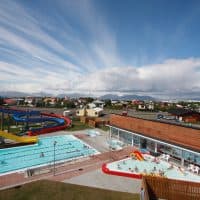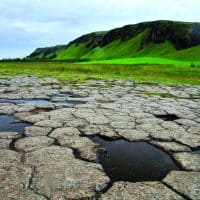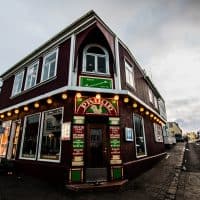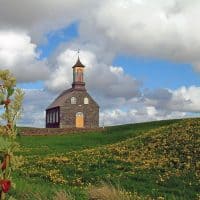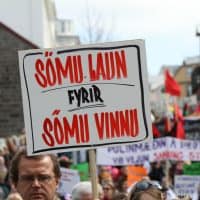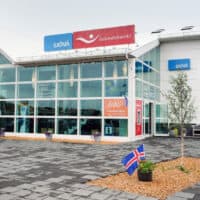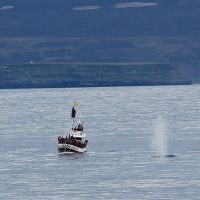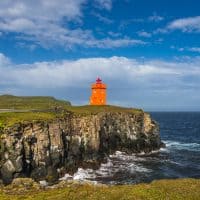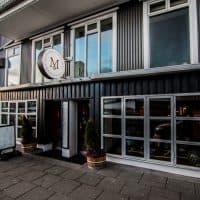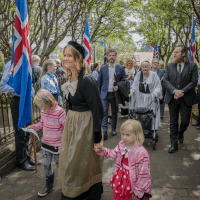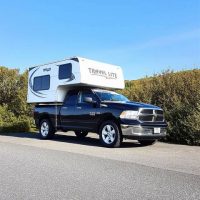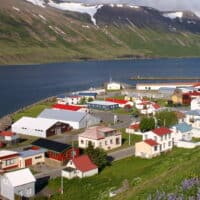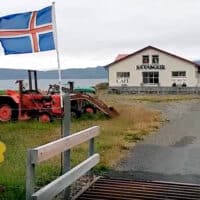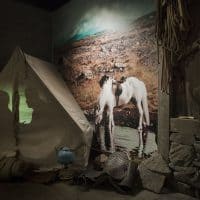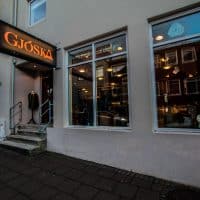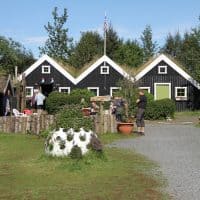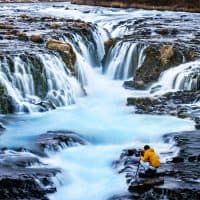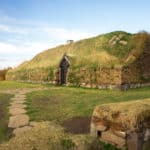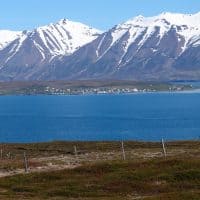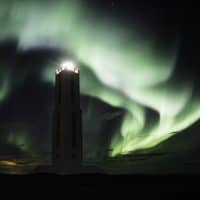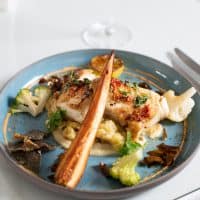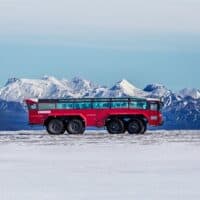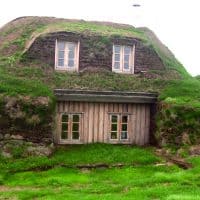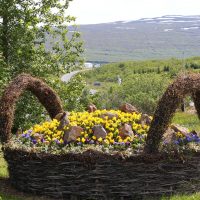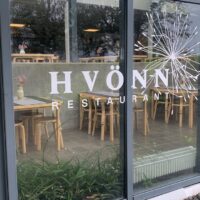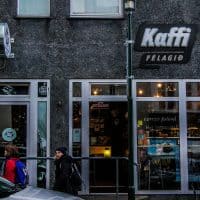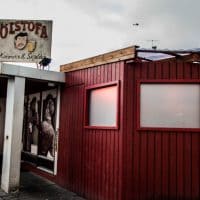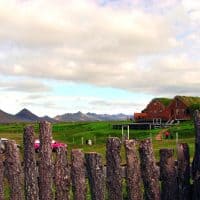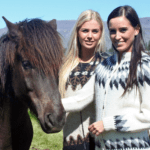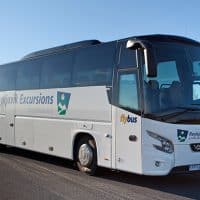2018
The Icelandic Men’s Football (Soccer) Team qualifies for the World Cup, the smallest nation ever to qualify.
2010
Eyjafjallajökull erupts, causing enormous disruption to air travel across Western Europe, due to a huge ash plume.
2009
Jóhanna Sigurðardóttir becomes the first female prime minister of Iceland, as well as the first openly gay head of state in the world.
2008
Financial crisis hit Iceland, the government takes over control of all three major banks in Iceland and the International Monetary Found aids for a while.
2007
Smoking is banned by law in all restaurants, bars and nightclubs in Iceland.
2006
Iceland’s population reaches 300,000.
2004
The National Museum is reopened after extensive renovations that took over six years.
2003
Íslendingabók (“The Book of Icelanders”) was made publicly available for all Icelanders, free of charge, where they can trace their relation to any individual the database contains, all the way back to settlement of Iceland, in the year 874.
2002
Kárahnjúkar dam project begun. Kárahnjúkar power station is to supply power to a new aluminium smelter at Reyðafjörður, East Iceland.
2001
Olympic boxing is legalized again in Iceland after 45 years of prohibition.
2000
Two earthquakes, 6.5 and 6.6 Richter scale, shake the south, damaging houses and infrastructure but leaving people unharmed.
1998
The famous movie star, the whale Keiko, is transported back from USA to its origin around the Westman Islands.
1995
Iceland hosts the World Cup in handball.
1994
Icelanders celebrate 50 years of independence with a great festival at Þingvellir.
1992
Reykjavík’s inhabitants reach 100,000. The City Hall is inaugurated.
1992
“Börn Náttúrunnar”, a motion picture by Friðrik Þór Friðriksson, is nominated for an Oscar Academy Award as the best foreign film.
1989
Icelanders are allowed to buy and consume beer after 74 years of prohibition.
1989
Pope John Paul II becomes the first pope to visit Iceland.
1986
Iceland participates for the first time in the Eurovision Song Contest, that year held in Norway, the song group: ICY landing in the 16th seat with “Gleðibankinn” (The Bank of Fun).
1986
U.S. President Ronald Regan and Soviet leader Mikhail Gorbatsjev meet at Höfði House in Reykjavík for negotiations on bringing the Cold War to an end.
1980
Vigdís Finnbogadóttir is the first woman in the world to be elected head of state in democratic elections.
1980
Tourists are allowed to buy 12 bottles of beer per person toll free when arriving in Iceland.
1976
The last “Cod War” between Iceland and Britain takes place. Iceland wins sovereignty over its fishing grounds.
1975
Iceland’s territorial waters are expanded to cover 200 miles.
1974
The construction of roads and bridges over Skeiðarársandur in the southeast is completed and the Ring Road, national route no. 1 around the island, thus completed.
1974
The first Icelandic female priest is nominated.
1973
Volcanic eruption begins on Heimaey in the Westman Islands, leaving the island uninhabitable for a few months.
1972
Chess players Bobby Fischer and Boris Spassky take on in “the dual of the century” in Reykjavik, for the world championship.
1971
The first Icelandic manuscripts are brought back to Iceland from Denmark.
1968
Icelanders change from driving on the left side of the road to driving on the right side.
1966
The first Icelandic television broadcast takes place.
1963
A great volcanic eruption below sea level, close to the Westman Islands, forms a new island named Surtsey.
1955
Writer Halldór Kiljan Laxness wins the Nobel Prize for Literature.
1949
Iceland becomes a member of NATO.
1949
A helicopter is flown for the first time in Iceland.
1949
Iceland’s first traffic lights are set up in Reykjavik.
1947
Telecommunication between Iceland and the USA becomes a reality.
1946
The first Icelandic motion picture in full colours is premiered.
1946
Iceland becomes a member of the United Nations.
1944
Iceland breaks off the alliance with the Danish crown and becomes an independent republic again.
1944
Sveinn Björnsson is elected Iceland’s first president.
1941
The American Navy takes over the role of the British Military in Iceland’s occupation.
1940
World War II: British forces occupy Iceland.
1935
Production and trade of all alcoholic beverages except beer is allowed again in Iceland.
1935
Golf is played for the first time in Iceland.
1935
Telecommunication between Iceland and foreign countries becomes reality.
1931
Public busses operated in Reykjavík for the first time.
1930
Hótel Borg, Iceland’s largest hotel at that time, opens its doors.
1930
The States radio station, RÚV, begins broadcasting.
1928
Drilling for hot water in Laugardalur, Reykjavík, marks the beginning of the district heating in Reykjavík.
1928
The first scheduled domestic flight in Iceland takes place between Reykjavík in the south and Akureyri in the north.
1922
Icelandic currency is issued for the first time.
1922
The first woman is elected to take a place in the national assembly, Althingi.
1919
The first flight of an airplane takes place in Reykjavik.
1918
Iceland becomes a sovereign and independent state within the Kingdom of Denmark.
1918
The coldest year in Iceland’s recorded history. The temperature measures -37,9 °C at Grímsstaðir á Fjöllum.
1918
The Spanish Influenza spreads in Iceland, over 10,000 people are infected and 300 die.
1915
Production and trade of all alcoholic beverages is prohibited in Iceland.
1913
Iceland’s first and only railway is laid from Öskjuhlíð hill to Reykjavík Harbour. It was used to transport rocks and gravel for the harbour’s construction.
1908
Education is declared compulsory for children 10 to 14 years old.
1907
Married women in Reykjavik are given eligibility and the right to vote in community elections.
1906
Iceland’s first cinema opens in Reykjavik.
1905
The first Icelandic telecommunication company, Bæjarsíminn, is founded, connecting 15 telephones.
1904
The first automobile is imported to Iceland.
1904
Iceland is granted home rule. Hannes Hafstein is elected Iceland’s first government minister.
1904
The first electrical lights are lit in Iceland.
1897
The first gramophone is imported to Iceland.
1886
Landsbankinn, the first bank institute in Iceland, is founded.
1882
Unmarried women and widows over 25 years old were granted the right to vote in community elections.
1880
The construction of the Parliament house in Reykjavík is begun.
1874
The Danish crown confirms the first constitution of Iceland, giving Althingi, the national assembly, legislative and appropriative authority.
1870
Many Icelanders begin to migrate to Canada and America in search for a better life.
1865
The first caesarean section is performed in Iceland. The child lives but the mother dies few days later.
1855
The Danish king legalizes freedom of the press in Iceland.
1844
The last pair of the great auk (Pinguinus impenis) is killed in Eldey rendering them extinct.
1830
The last execution in Iceland is carried out.
1800
Althingi is abolished with a royal decree from the Danish crown.
1798
Alþingi, the national assembly, is held at it’s original location in Þingvellir for the last time.
1789
The Danish trade monopoly in Iceland ends.
1783
“Skaftáreldar”, one of the largest volcanic eruptions in recorded history, begins, killing over half of the population.
1782
Law abolishes excommunication.
1771
Reindeer brought to Iceland for the first time.
1750
Two daredevils climb to the top of Mountain Hekla, which, at that time, was believed to be the gateway to hell.
1703
The first complete census made in Iceland. At the time there were 50,358 people divided between 7,622 homes.
1700
The present (Gregorian) calendar is adopted.
1662
Iceland officially becomes a part of the Danish Monarchy.
1627
Algerian pirates invade the Westman Islands and abduct 242 of the inhabitants.
1602
The Danish trade monopoly in Iceland begins.
1550
The last Catholic bishop, Jón Arason, and his two sons were executed at Skálholt for the sakes of undermining the Lutheran church.
1541
The Reformation from Catholicism to Lutheranism is confirmed at Althingi.
1530
The first printing press in Iceland is set up at Hólar in Hjaltadalur.
1402
The Plague known as “Svarti dauði” (Black death) rages in Iceland, killing up to one third of the population.
1380
Iceland’s rule passes on from the Norwegian Crown to the Danish Crown.
1343
Sister Katrín, found guilty of selling her soul to the devil, is the first person to be burnt on a stake in Iceland.
1262
Althingi swears an oath of allegiance to the Norwegian Crown, thereby ending the republic’s independence.
1244
“Flóabardagi”, the greatest sea battle ever to be fought along the coasts of Iceland takes place in Húnaflói bay.
1120+
The scholar Ari “the wise”writes a history of Iceland from settlement up to date, marking the beginning of saga writing in Iceland.
1117
The first book of Icelandic law, Hafliðaskrá, is written.
1104
A great eruption from the volcano Hekla destroys a whole valley of farms, killing large amounts of cattle by ash and fumes that poisoned the grass.
1006
Alþingi, Iceland’s parliament, bans duels as the didn’t reconcile very well with Christianity.
1000
Icelanders peacefully decide to convert from Heathen religion to Christianity, not so much for spiritual reasons as for political ones.
999
Leifur “the lucky” Ericsson explores America´s coast at Canada and discovers Newfoundland (Vinland the good).
985
Bjarni Herjolfsson sights the American mainland, the first among Europeans.
930
The settlement of Iceland ends and Althingi, a parliamentary assembly, is founded at Thingvellir. It is the oldest, existing parliament in the world.
874
The first free Norseman, Ingolfur Arnarson, settles in Iceland for life.
855
The Swedish Viking Garðar Svavarsson sails around Iceland and verifies that it is an island.
850
The Viking Naddoður accidentally discovers Iceland and names it Snaeland (The land of snow).
825
The Irish scholar Dicuíl records that Irish hermit monks have been leaving Ireland to settle in the island of Thule.
330 BC
The Greek explorer Pytheas writes about a populated island in the north called Thule. Generally this island is believed to be Iceland.
Sort by Browse on map
-

Domino’s Pizza – Akureyri
Domino‘s is the number 1 pizza in Iceland. We only use quality raw material in our top quality products. Persistence is very important and our customers can expect to get the same quality at all times in all our 23 stores.
-

Domino’s Pizza – Ánanaust
Domino‘s is the number 1 pizza in Iceland. We only use quality raw material in our top quality products. Persistence is very important and our customers can expect to get the same quality at all times in all our 23 stores.
-
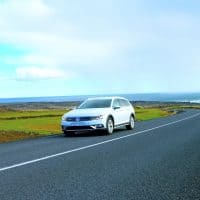
Europcar, Borgarnes
Europcar is the largest car rental operator in Iceland located at all major airports throughout the country. The largest rental station is in Reykjavík and we are an Authorized Terminal Operator at Keflavik International Airport.
-

Caruso
A well-established family-run Italian restaurant situated in a restored historical building. Delicious Italian cuisine pasta dishes, pizzas and other meat dishes are offered in a cosy atmosphere.
-
Vestmannaeyjar Swimming Pool
Vestmannaeyjar Swimming Pool has 25 meters indoors pool with saltwater and 1 meter high spring board. The oudtoors area has two hot tubs, jacuzzi, childrens pool, water slide, trampoline and toys.
-

ELDHEIMAR Volcano Museum
South Iceland +3544882700Volcano museum of remembrance. A unique volcanic and geological exhibition about two of the most spectacular volcanos in Iceland. Surtsey, the island from 1963, listed as a natural wonder on the UNESCO World Heritage List. Heimaey, the dramatic eruption in 1973.
-

National Gallery of Iceland
The National Gallery of Iceland was founded in October 1884 in Copenhagen by Björn Bjarnarson (1853–1918), later district commissioner. The founding collection was based on gifts, mainly by Danish artists.
-

-

Suðureyri Swimming Pool
Suðureyri Swimming Pool is 17 meters (56') long, with two hot tubs and wading pool.
-

Kaldi Brewery Tour
Bruggsmiðjan is the first microbrewery in Iceland. Kaldi has been from the beginning one of the most popular bottled beer in Iceland and has a lot of exciting things happening in the future.
-

ZO•ON Iceland
ZO•ON is for urban outdoor adventurers. We create clothes that give people the confidence to get out there and move freely between the city and nature – whatever the weather.
-

-

Fjallakofinn
Fjallakofinn aka. "The Mountain Hut" is one of the largest outdoor retail stores in Iceland offering all types of high quality outdoors equipment. The company and its staff have extensive experience in traveling in the outdoors and outdoor activities in Iceland.
-

Dalslaug Pool
Dalslaug is a 25 meter geothermal pool located in Úlfarsárdalur — and is the newest swimming pool in Reykjavík.
-

-

Lyfja Pharmacy – Grundarfjörður
Lyfja is one of the oldest private pharmacies in Iceland, having first opened its doors in 1996. Today Lyfja runs and operates more than 30 pharmacies all over Iceland. Lyfja strives to provide excellent services, a good selection of products and fair pricing that is the same everywhere.
-

Lyfja Pharmacy – Smáratorg
Lyfja is one of the oldest private pharmacies in Iceland, having first opened its doors in 1996. Today Lyfja runs and operates more than 30 pharmacies all over Iceland. Lyfja strives to provide excellent services, a good selection of products and fair pricing that is the same everywhere.
-

Glacier Lagoon
Glacier Lagoon offers exciting boat trips on Jökulsárlón Glacier lagoon in amphibian boats. During the excursion you sail among the huge icebergs in the picturesque scenery.
-
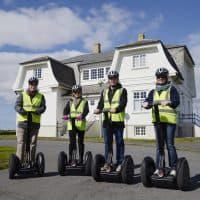
Reykjavik Segway Tours
Reykjavik Segway tours offers scheduled Segway tours in Reykjavik in summer and on demand all year.
-

-

Níu nuddstofa – Massage
Relaxation massage, Classic/Swedish massage, Deep Tissue massage, Sports massage, Traditional Thai massage and many more.
-

Laugarvatn Adventure
Stand up paddleboard (SUP) at Laugarvatn, in the middle of The Golden Circle. Book at: laugarvatnadventure.is
-

Orkan, Stykkishólmur
Orkan has 70 self service gas stations around Iceland and offers low price fuel.
-

Ólafsvík Swimming Pool
Ólafsvík Swimming Pool has outside and indoor pools, hot tubs, childrens pool and slide.
-

Laugardalslaug Pool
Laugardalslaug is the ideal finish to an action-packed day out in Laugardalur. It has pools both indoors and outdoors, a large slide and a fun play area for children. For those who wish to relax, there are plenty of hot tubs, including a salt tub and a steam bath.
-
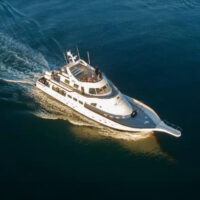
-
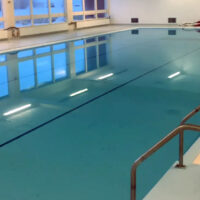
-

Lyfja Pharmacy – Sauðárkrókur
Lyfja is one of the oldest private pharmacies in Iceland, having first opened its doors in 1996. Today Lyfja runs and operates more than 30 pharmacies all over Iceland. Lyfja strives to provide excellent services, a good selection of products and fair pricing that is the same everywhere.
-

Domino’s Pizza – Hraunbær
Domino‘s is the number 1 pizza in Iceland. We only use quality raw material in our top quality products. Persistence is very important and our customers can expect to get the same quality at all times in all our 23 stores.
-

Arctic Adventures
Arctic Adventures is Iceland’s leading tour operator, offering day tours, multi-day trips, custom experiences, and various activities. With 40+ years of experience, they welcome travelers on expert-guided adventures all around Iceland.
-

-

-

Grillhúsið, Sprengisandur
One of the city’s favorite Rock‘n’Roll Steakhouses. They offer a diverse menu of steaks, burgers, Tex Mex food and more at affordable prices.
-

Stykkishólmur
West IcelandStykkishólmur is a charming town with beautifully maintained old houses. It has an industrious harbour where boat trips around Breiðarfjörður are offered as well as the ferry Baldur to Flatey island and Brjánslækur in the West Fjords.
The Norwegian House serves as a regional museum for the Snæfellsnes area and it is worth visiting
-

JS Watch Co.
JS Watch Company Reykjavik is a small Icelandic watch manufacturer and probably one of the world’s smallest manufacturers of stylish, quality watches. All the watches are designed and assembled by hand in Iceland.
-

Orkan, Neskaupstaður
Orkan has 70 self service gas stations around Iceland and offers low price fuel.
-

Domino’s Pizza
Domino‘s is the number 1 pizza in Iceland. We only use quality raw material in our top quality products. Persistence is very important and our customers can expect to get the same quality at all times in all our 23 stores.
-

Orkan, Reyðarfjörður
Orkan has 70 self service gas stations around Iceland and offers low price fuel.
-

-

Laugarfell
Laugarfell offers accommodation for 28 people and it is located in the eastern part of the Icelandic Highlands.
-

Domino’s Pizza – Mjódd
Domino‘s is the number 1 pizza in Iceland. We only use quality raw material in our top quality products. Persistence is very important and our customers can expect to get the same quality at all times in all our 23 stores.
-

-

-

-

Ólafsfjörður Swimming Pool
Ólafsfjörður Swimming Pool is 25 meters (82'), with hot tub, jacuzzi and two water slides.
-

Ásvallalaug Swimming Pool
Ásvallalaug in Hafnarfjörður is one of the largest swimming centers in Iceland
-

Orkan, Keflavík Intl. Airport
Orkan has 70 self service gas stations around Iceland and offers low price fuel.
-

Lyfja Pharmacy – Kópasker
Lyfja is one of the oldest private pharmacies in Iceland, having first opened its doors in 1996. Today Lyfja runs and operates more than 30 pharmacies all over Iceland. Lyfja strives to provide excellent services, a good selection of products and fair pricing that is the same everywhere.
-

Suðurnesjabær
Reykjanes Peninsula WebsiteSuðurnesjabær is a municipality on the northwest tip of Reykjanes Peninsula.
-

-

Eldhúsið restaurant
Gistihúsið – Lake Hotel Egilsstadir restaurant is innovative and ambitious. Eldhúsið Restaurant offers Icelandic as well as international cuisine.
-

Kaffitár – Kringlan
Kaffitár is an Icelandic coffee roaster and operates five cafés and two bakeries. You can expect a cozy atmosphere, direct trade specialty coffee and artisan breads, pastries and cakes.
-

Orkan, Hallormsstaður
Orkan has 70 self service gas stations around Iceland and offers low price fuel.
-

-

Lyfja Pharmacy – Nýbýlavegur
Lyfja is one of the oldest private pharmacies in Iceland, having first opened its doors in 1996. Today Lyfja runs and operates more than 30 pharmacies all over Iceland. Lyfja strives to provide excellent services, a good selection of products and fair pricing that is the same everywhere.
-

Hótel Skálholt
Hótel Skálholt is a beautiful place in the uplands of the countryside of Iceland. It's a perfect place to stay when you want to visit places in the Golden Circle, the South Coast or the highlands of Iceland since we are situated near so many places to have wonderful day trips.
-

Ísafold Lounge & Bar
Downtown Reykjavik +354 595 8535 WebsiteHappy Hour
Every day from 4:00PM to 6:00PM.Beer: 990 kr.Wine: 1.190 kr.* Prices in foreign currencies are approximates. Source: Arion banki.
Ísafold Lounge & Bar, located within Þingholt by Center Hotels, is a cozy hideaway perfect for a quiet drink or a stylish gathering. Though intimate in size, it offers a curated selection of wines, beers, and whiskeys that make it a true hidden gem in the city. Happy Hour is held daily from 16:00–18
-

Hotel Viking
This Viking-themed hotel is in the seaside town of Hafnarfjordur. Parking, WiFi and access to a sauna and hot tub are all free.
-

The House of Collections
The House of Collection offers the exhibition, Points of View, which takes guests on a journey through the Icelandic visual world of past and present.
-

Center Hotels Laugavegur
Center Hotels Laugavegur captures the lively and creative spirit of Reykjavik, with a modern design and an urban, playful vibe throughout. Located on the city’s main shopping street, it’s the perfect base for guests who want to be in the middle of the action. The hotel offers a variety of rooms from small and cozy to sp
-

Krauma
Krauma is a natural geothermal baths and spa at Deildartunguhver. Europe´s most powerful hot spring. The cold water comes from Ok, Iceland´s smallest glacier.
-
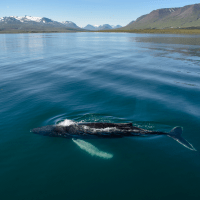
Whale Watching Akureyri
We represent Elding, Whale Safari and Ambassador in Akureyri, North Iceland. Our year-round tours are mainly focused on humpback whale whatching in Eyjafjörður, although cetacean such as minke whales, dolphins, porpoises and other bigger whales can be seen occasionally.
-

Lyfja Pharmacy – Seyðisfjörður
Lyfja is one of the oldest private pharmacies in Iceland, having first opened its doors in 1996. Today Lyfja runs and operates more than 30 pharmacies all over Iceland. Lyfja strives to provide excellent services, a good selection of products and fair pricing that is the same everywhere.
-

Domino’s Pizza – Hafnarfjörður
Domino‘s is the number 1 pizza in Iceland. We only use quality raw material in our top quality products. Persistence is very important and our customers can expect to get the same quality at all times in all our 23 stores.
-

Lyfja Pharmacy – Neskaupstaður
Lyfja is one of the oldest private pharmacies in Iceland, having first opened its doors in 1996. Today Lyfja runs and operates more than 30 pharmacies all over Iceland. Lyfja strives to provide excellent services, a good selection of products and fair pricing that is the same everywhere.
-

Magic Ice – Ice bar & Gallery
Welcome to an enchanting and magical adventure in Reykjavik, a sub-zero experience that you´ll never forget! Inside find an ice-art gallery with sculptures & a bar, all made in crystal-clear ice.
-

-

Orkan, Stekkjarbakki
Orkan has 70 self service gas stations around Iceland and offers low price fuel.
-

Kirkjubæjarklaustur Swimming Pool
Kirkjubæjarklaustur Swimming Pool has hot tub, slide and childrens pool.
-
-

Europcar, Reykjavík Domestic Airport
Europcar is the largest car rental operator in Iceland located at all major airports throughout the country. The largest rental station is in Reykjavík and we are an Authorized Terminal Operator at Keflavik International Airport.
-

-

-

Grandi by Center Hotels
Grandi by Center Hotels sits in Reykjavik’s creative district, surrounded by galleries, shops, and local culture. With its modern industrial design and welcoming vibe, the hotel is a lively spot featuring a stylish bar and a popular restaurant. The hotel offers 195 comfortable rooms, each with a mini bar, TV with video on
-

Lyfja Pharmacy – Patreksfjörður
Lyfja is one of the oldest private pharmacies in Iceland, having first opened its doors in 1996. Today Lyfja runs and operates more than 30 pharmacies all over Iceland. Lyfja strives to provide excellent services, a good selection of products and fair pricing that is the same everywhere.
-

-

-

Activity Iceland
Where Luxury Meets Adventure
Welcome to the heart of Icelandic experiences crafted just for you. Immerse yourself in luxury and adventure, where every detail is designed to exceed your expectations. We know every traveler is unique, so we customize our se
-

Gentle Giants – Húsavík
Gentle Giants offers whale watching on traditional Icelandic oak boats and modern RIB speedboats, as well as other exciting seafaring adventures like sea angling, bird watching and island excursions. We operate from Húsavík, "the Whale Capital of Iceland", in the north and have more than 150 years of family history in the bay.
-

-

Sjávarsetrið
Sjávarsetrið is a new restaurant located at the harbor in Sandgerði. Warm and welcoming interior should make everyone feel comfortable. Sjávarsetrið is the vision of two young couples who come from different backgrounds and have different tastes in food.
-

Domino’s Pizza – Rjúpnasalir
Domino‘s is the number 1 pizza in Iceland. We only use quality raw material in our top quality products. Persistence is very important and our customers can expect to get the same quality at all times in all our 23 stores.
-

Europcar, Skútuvogur, Rvk
Europcar is the largest car rental operator in Iceland located at all major airports throughout the country. The largest rental station is in Reykjavík and we are an Authorized Terminal Operator at Keflavik International Airport.
-

-

Skálholt
Skálholt, a cultural, historical and spiritual centre with a cathedral, tomb of bishops and a museum.
-

Þelamörk Swimming Pool
Varmahlíð Swimming Pool has two sections. The larger one has 25 meters (82') pool, the smaller one has 12,5 meters (41') pool with water slide.
-

Nauthólsvík Geothermal Beach
Downtown Reykjavik WebsiteAt the bottom of the Öskjuhlíð hill, you can find the man-made beach at Nauthólsvík. Set within a 3.5 km walk from the town centre and only a 1.3 km walk from the Pearl.
-

-

Orkan, Seyðisfjörður
Orkan has 70 self service gas stations around Iceland and offers low price fuel.
-

Orkan, Reykjavíkurvegur
Orkan has 70 self service gas stations around Iceland and offers low price fuel.
-

Lyfja Pharmacy – Eskifjörður
Lyfja is one of the oldest private pharmacies in Iceland, having first opened its doors in 1996. Today Lyfja runs and operates more than 30 pharmacies all over Iceland. Lyfja strives to provide excellent services, a good selection of products and fair pricing that is the same everywhere.
-

American Bar
Downtown Reykjavik +354-571-9999 WebsiteHappy Hour
Every day from 4:00PM to 7:00PM.Beer: 1000 kr.Wine: 1200 kr.* Prices in foreign currencies are approximates. Source: Arion banki.
The place to go for American culture and entertainment. It is a diner-style bar, serving American greats such as buffalo wings and burgers. American whiskey and beers.
-

-

Selfoss Swimming Pool
Selfoss Swimming Pool is 25 meters (82') outdoors pool and a 18 meters (59') indoor pool.
-

-

Europcar, Patreksfjörður
Europcar is the largest car rental operator in Iceland located at all major airports throughout the country. The largest rental station is in Reykjavík and we are an Authorized Terminal Operator at Keflavik International Airport.
-

-

Europcar, Selfoss
Europcar is the largest car rental operator in Iceland located at all major airports throughout the country. The largest rental station is in Reykjavík and we are an Authorized Terminal Operator at Keflavik International Airport.
-

Stokkseyri Swimming Pool
Stokkseyri Swimming Pool is 18 meters (59') with water slide, childrens pool and two hot tubs.
-

Lyfja Pharmacy – Ísafjörður
Lyfja is one of the oldest private pharmacies in Iceland, having first opened its doors in 1996. Today Lyfja runs and operates more than 30 pharmacies all over Iceland. Lyfja strives to provide excellent services, a good selection of products and fair pricing that is the same everywhere.
-

ÓX Restaurant
ÓX Restaurant is an 11 seat restaurant with prepaid booked dinner experience which takes 3 hours.
-
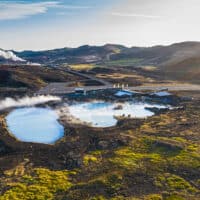
Mývatn Nature Baths
The Mývatn Nature Baths are the north’s answer to the Blue Lagoon in the south. The water contains a rich blend of minerals, silicates and micro-organisms, giving it the blue colour.
-

Domino’s Pizza – Nóatún
Domino‘s is the number 1 pizza in Iceland. We only use quality raw material in our top quality products. Persistence is very important and our customers can expect to get the same quality at all times in all our 23 stores.
-

Grillhúsið, Borgarnes
One of the city’s favorite Rock‘n’Roll Steakhouses. They offer a diverse menu of steaks, burgers, Tex Mex food and more at affordable prices.
-

Lyfja Pharmacy – Reykjanesbær
Lyfja is one of the oldest private pharmacies in Iceland, having first opened its doors in 1996. Today Lyfja runs and operates more than 30 pharmacies all over Iceland. Lyfja strives to provide excellent services, a good selection of products and fair pricing that is the same everywhere.
-

Domino’s Pizza – Selfoss
Domino‘s is the number 1 pizza in Iceland. We only use quality raw material in our top quality products. Persistence is very important and our customers can expect to get the same quality at all times in all our 23 stores.
-

-

Miðgarður Spa
Miðgarður spa is a beautifully designed spa that includes two large hot tubs, located both inside and outside in a secluded garden. A sauna, dressing rooms, treatment rooms and a fitness center are located in the spa. You can choose from a great selection of beauty treatments and massages therapies. Drinks can also be served in the spa.
-

-

Europcar, Þórshöfn
Europcar is the largest car rental operator in Iceland located at all major airports throughout the country. The largest rental station is in Reykjavík and we are an Authorized Terminal Operator at Keflavik International Airport.
-
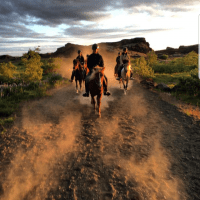
The Icelandic Horse
The Icelandic Horse is a horse rental which offers high quality services and has been top ranked on TripAdvisor from the start. Small family firm with licensed local tour guides on all tours.
-

-

Orkan, Hörgárbraut, Akureyri
Orkan has 70 self service gas stations around Iceland and offers low price fuel.
-

Sundlaug Þorlákshafnar
One of the best swimming pool facilities in the South. Nice indoor activity pool for kids, new hot tubs outside and great water slides. The camping site is next to the swimming pool area.
-

Breiðholtslaug Pool
Icelanders love using the swimming pools as a way of relaxing and socializing. There are seven swimming pools in Reykjavik alone and almost every town in Iceland has a public swimming pool, each with its own character and features.
-

Domino’s Pizza – Dalbraut
Domino‘s is the number 1 pizza in Iceland. We only use quality raw material in our top quality products. Persistence is very important and our customers can expect to get the same quality at all times in all our 23 stores.
-

-

Den Danske Kro
Den Danske kro or "The Danish Pub" is a small danish themed local pub located on a side street of Laugarvegur. Den Danske kro is a casual place in the heart of downtown Reykjavík where everyone is welcome,
-

Vesturbæjarlaug Pool
Downtown Reykjavik +354 411 5150Vesturbæjarlaug is a neighbourhood pool, located within walking distance of the city centre, not far away from many of the tourist attractions. The pool has an outdoor pool and children’s pool, steam bath and sauna.
-

Whales of Iceland
The largest whale exhibition in Europe, located at Grandi District, about a 15-minute walk from the town centre. The exhibition displays 23 man-made, life size models of the whales.
-
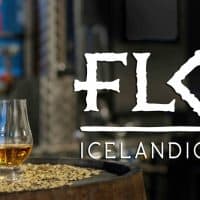
Eimverk Distillery Tasting Tour
Eimverk Distillery is Icelands’ first and only whisky distillery and a perfect destination for whiskey fans and for anyone with an interest in Icelandic Spirits.
-
-

Kaffivagninn
Kaffivagninn is Iceland’s oldest restaurant located on the harbor in downtown Reykjavík. Open for breakfast lunch and Dinner.
-

Harpa Concert Hall
The most distinguished landmark of Reykjavik is the cultural heart of the city. This glass edifice is the main venue for international music concerts and is home to the Icelandic Symphony Orchestra, and the Opera.
-

Keldur, a Historic Turf Farm
At Keldur in Rangárvallasýsla, there is an old turf farm which, despite its age, is one of the largest preserved turf farms in south Iceland.
-

ZO•ON Kringlan
ZO•ON is for urban outdoor adventurers. We create clothes that give people the confidence to get out there and move freely between the city and nature – whatever the weather.
-

Farmers & Friends – Laugavegur
Farmers Market is an Icelandic design company and clothing brand, founded in 2005. With strong ties to the vibrant Icelandic music and design scene. There are two Farmers & Friends shops, One in Laugavegur and the other in the Grandi district.
-

-

Fjallabyggð
The municipality of Fjallabyggð came into being as an administrative unit when the community of Ólafsfjörður community and the municipality of Siglufjörður were merged in 2006. The population of Fjallabyggð is around 2.015. The construction of the Héðinsfjörður tunnel, which links the two regional centres, has made the Tröllaskagi penin
-

Lyfja Pharmacy – Búðardalur
Lyfja is one of the oldest private pharmacies in Iceland, having first opened its doors in 1996. Today Lyfja runs and operates more than 30 pharmacies all over Iceland. Lyfja strives to provide excellent services, a good selection of products and fair pricing that is the same everywhere.
-

Þorlákshöfn Swimming Pool
Þorlákshöfn Swimming Pool has 25 meters (82') pool, two hot tubs, wading pool, two water slides and an inside pool, 45 cm (17,7") deep.
-

Europcar, Húsavík
Europcar is the largest car rental operator in Iceland located at all major airports throughout the country. The largest rental station is in Reykjavík and we are an Authorized Terminal Operator at Keflavik International Airport.
-

Tálknafjörður Swimming Pool
Tálknafjörður Swimming Pool is 25 meters (82') long, with two hot tubs, sauna, cold tub, wading pool and a waterslide.
-

Orkan, Mýrarvegur, Akureyri
Orkan has 70 self service gas stations around Iceland and offers low price fuel.
-

Europcar, Vopnafjörður
Europcar is the largest car rental operator in Iceland located at all major airports throughout the country. The largest rental station is in Reykjavík and we are an Authorized Terminal Operator at Keflavik International Airport.
-

-
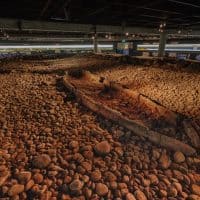
The Settlement Exhibition
The exhibition gives an insight into the life and work of Iceland´s first settlers. The focus of the exhibition is around the remains of the oldest habitation in Reykjavik.
-

Europcar, Akureyri Airport
Europcar is the largest car rental operator in Iceland located at all major airports throughout the country. The largest rental station is in Reykjavík and we are an Authorized Terminal Operator at Keflavik International Airport.
-

-

Vestmannaeyjar
South IcelandVestmannaeyjar, an archipelago of volcanic islands off the south coast with Heimaey being the only inhabited island. Two historical events have shaped this island, the Turkish invasion of 1627 and the devastating eruption of 1973. A project to unearth buried houses was named Pompeii of the North and is still ongoing.
-

Seal Watching Hvammstangi
Seal Watching Hvammstangi offers boat trips from Hvammstangi around Miðfjörður and Húnaflói during the summer, giving you the opportunity to watch seals in their natural environment. Seal Waching boat tours are offered from 15. May until 30. September each year.
-

-

Domino’s Pizza – Hafnargata
Domino‘s is the number 1 pizza in Iceland. We only use quality raw material in our top quality products. Persistence is very important and our customers can expect to get the same quality at all times in all our 23 stores.
-

Orkan, Fagradalsbraut, Egilsstaðir
Orkan has 70 self service gas stations around Iceland and offers low price fuel.
-

Europcar, motorhome dept.
Europcar is the largest car rental operator in Iceland located at all major airports throughout the country. The largest rental station is in Reykjavík and we are an Authorized Terminal Operator at Keflavik International Airport.
-

Lyfja Pharmacy – Egilsstaðir
Lyfja is one of the oldest private pharmacies in Iceland, having first opened its doors in 1996. Today Lyfja runs and operates more than 30 pharmacies all over Iceland. Lyfja strives to provide excellent services, a good selection of products and fair pricing that is the same everywhere.
-

Tres Locos
Tres Locos is a new fun and lively Mexican restaurant located in Hafnarstræti 4, Reykjavík
-

Domino’s Pizza – Mosfellsbær
Domino‘s is the number 1 pizza in Iceland. We only use quality raw material in our top quality products. Persistence is very important and our customers can expect to get the same quality at all times in all our 23 stores.
-

Domino’s Pizza – Skúlagata
Domino‘s is the number 1 pizza in Iceland. We only use quality raw material in our top quality products. Persistence is very important and our customers can expect to get the same quality at all times in all our 23 stores.
-

Europcar, Akureyri
Europcar is the largest car rental operator in Iceland located at all major airports throughout the country. The largest rental station is in Reykjavík and we are an Authorized Terminal Operator at Keflavik International Airport.
-

Reykjavik Bike Tours & Bicycle Rental
Reykjavik Bike Tours offers guided bicycle tours in Reykjavik, Segway tours and bicycle rental. We stock mountain bikes, city bikes, hybrid bikes, tandems, children's bikes, gravel bikes, road bikes, connecting bikes, bicycle trailers and E-bikes.
-

Icelandic Knives
Mr. Johann Vilhjalmsson, master knife- and gunsmith, has been custom making knives since 1994. At that time he was a Gunsmithing apprentice at the School of the Gunsmiths in Liege, Belgium.
-

Kaffitár – Stórhöfði
Kruðerí Kaffitárs is an artisan bakery and café. You can expect a cozy atmosphere, direct trade specialty coffee and artisan breads, pastries and cakes.
-

Sundhöll Hafnarfjarðar Swimming Pool
Sundhöll Hafnarfjarðar was the first swimming pool in Hafnarfjörður
-

Lyfja Pharmacy – Þórshöfn
Lyfja is one of the oldest private pharmacies in Iceland, having first opened its doors in 1996. Today Lyfja runs and operates more than 30 pharmacies all over Iceland. Lyfja strives to provide excellent services, a good selection of products and fair pricing that is the same everywhere.
-

-

Orkan, Miðvangur, Egilsstaðir
Orkan has 70 self service gas stations around Iceland and offers low price fuel.
-

Domino’s Pizza – Garðatorg
Domino‘s is the number 1 pizza in Iceland. We only use quality raw material in our top quality products. Persistence is very important and our customers can expect to get the same quality at all times in all our 23 stores.
-

Handknitting Association of Iceland
The Handknitting Association of Iceland offers a wide selection of traditional handknitted Icelandic sweaters as well as special designs and a variety of Icelandic woollen products.
-

Gistihúsið – Lake Hotel
Gistihúsið – Lake Hotel Egilsstadir is an established and renowned, family-run, hotel in a farming district.
-

Orkan, Vík in Mýrdalur
Orkan has 70 self service gas stations around Iceland and offers low price fuel.
-

Domino’s Pizza – Skeifan
Domino‘s is the number 1 pizza in Iceland. We only use quality raw material in our top quality products. Persistence is very important and our customers can expect to get the same quality at all times in all our 23 stores.
-
Sælingsdalslaug Swimming Pool
Sælingsdalslaug Swimming Pool is 25 m (82′) long, with wading pool, hot tub and sauna.
-

Icelandic Museum of Rock ‘N’ Roll
At the Icelandic Museum of Rock ‘n’ Roll guests can walk through the history of Icelandic pop and rock music throughout the years. Guests can dive deeper into the history of each artist and listen to their music with the help of the Rock ‘n’ Roll app on the iPad guests receive during the visit.
-

-
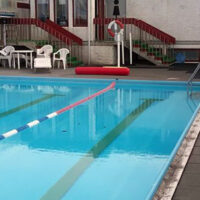
-

-

-

Kaffitár – Bankastræti
Kaffitár is an Icelandic coffee roaster and operates five cafés and two bakeries. You can expect a cozy atmosphere, direct trade specialty coffee and artisan breads, pastries and cakes.
-

Sjávargrillið
An upmarket restaurant specializing in delicious fish dishes. Boasts an award-winning chef who serves up delicacies with ease.
-

-

Geosea
Unique geothermal sea-baths in Húsavík, North-Iceland. A place of natural tranquility and a rejuvenating experience for body and soul.
-
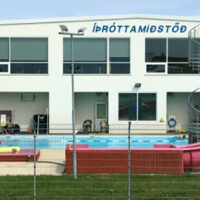
-
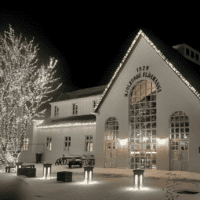
-
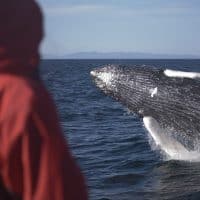
Elding Adventure at Sea
Elding is the original whale watching operator out of Reykjavík. We are a family owned company and offer the most talked-about whale watching and sea adventure tours in Iceland.
-

Sæta Svínið
A gastropub in the heart of the city specializing in local food and beer. Live events such as Party Karaoke and Party Bingo make this pub a fun place to visit.
-

Guðbrandur & Tína Jewellers
Downtown Reykjavik +354 552 3485Unique jewellery made by Guðbrandur and Tína Jezorski.
-

Jörgensen Kitchen & Bar
Close to Downtown +354 595 8565 WebsiteHappy Hour
Every day from 3:00PM to 6:00PM.Beer: 1096 kr.Wine: 1300 kr.* Prices in foreign currencies are approximates. Source: Arion banki.
The atmosphere at Jörgensen Kitchen & Bar is lovely and welcoming. The restaurant is sectioned in a way that we can welcome larger groups without interrupting more intimate dining experiences.
-
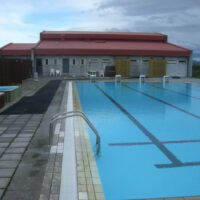
-

Handknitting Assocation of Iceland – Borgartún
The handknitting association of Iceland offers a wide selection of traditional handknitted Icelandic sweaters as well as special designs and a variety of Icelandic woollen products.
-

Hreyfill Taxi
Founded in 1943, Hreyfill Taxi is one of Iceland’s most respected taxi services. Besides providing comfort and convenient transportation around Reykjavik.
-

Sigurjón Ólafsson Museum
The Sigurjón Ólafsson Museum houses sculptures and drawings by sculptor Sigurjón Ólafsson, along with sources of information about the artist. It serves as a centre for research on his art.
-

-

-

Kirsuberjatréð
When shopping in Iceland, don´t miss Kirsuberjatréð, or The Cherry Tree, one of Reykjavik´s hidden secrets. They are 10 artists, all ladies, that run this contemporary collective full of art, design & handicrafts.
-

Sushi Social
Just off the main shopping street, Sushi Social offers a fusion of Icelandic, Japanese and South American cuisine and exotic cocktails.
-

Kaffi Duus
Kaffi Duus combines the facilities of a café, restaurant and a pub. They offer a cosy atmosphere and a splendid view over the Marina and surrounding areas.
-

Klébergslaug Pool
Klébergs swimming pool is located in Kjalarnes,by the sea shore with a view out to the ocean. Close by are facilities for sea swimming for those who dare.
-

-

Egilsstaðir Swimming Pool
Egilsstaðir Swimming Pool is 25 meters (82') with two hot tubs, childrens pool and water slide.
-

Drangsnes Hot Tubs
At the shore of Drangsnes in Strandir, there are three hot tubs, with a beautiful view over the ocean and over to the island of Grímsey.
-
-
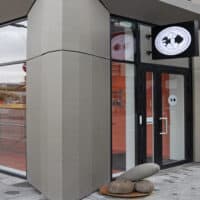
The Icelandic Phallological Museum
The Icelandic Phallological Museum is probably the only museum in the world to contain a collection of phallic specimens belonging to all the various types of mammal found in a single country. Phallology is an ancient science which, until recent years, has received very little attention in Iceland, excep
-

Orkan, Austurmörk, Hveragerði
Orkan has 70 self service gas stations around Iceland and offers low price fuel.
-

-

Reykjavík Maritime Museum
The Reykjavik Maritime Museum has both permanent and temporary exhibitions depicting the fishing history of Iceland as well as other exhibits pertaining to the ocean.
-

Grenivík Swimming Pool
Grenivík Swimming Pool is 16,67 meters (55'), with two hot tubs, cold tub and wading pool.
-

Viðey Island
Viðey Island is situated just off the coast of Reykjavík and is set in beautiful natural surroundings. The Island has a rich historical background and is home to the Imagine Peace Tower.
-

Geothermal Exhibition
The Geothermal Exhibition is located at the Hellisheiði Geothermal Power Plant, the largest geothermal plant in Iceland. Visitors can see into the plant and learn about the production and distribution of hot water and electricity undertaken by ON Power.
-

Lyfja Pharmacy – Smáralind
Lyfja is one of the oldest private pharmacies in Iceland, having first opened its doors in 1996. Today Lyfja runs and operates more than 30 pharmacies all over Iceland. Lyfja strives to provide excellent services, a good selection of products and fair pricing that is the same everywhere.
-

Europcar, Neskaupstaður
Europcar is the largest car rental operator in Iceland located at all major airports throughout the country. The largest rental station is in Reykjavík and we are an Authorized Terminal Operator at Keflavik International Airport.
-
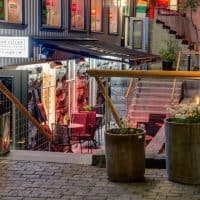
Matarkjallarinn: Food Cellar
Food Cellar is a restaurant, situated in a 160 year old building in the centre of Reykjavík. We like to think that Food is for your body and Music is for your soul.
-

-

Apotek Kitchen + Bar
The restaurant is casual-smart, offering delicious food in a vibrant atmosphere and stylish surroundings.
-

Grindavík
Reykjanes Peninsula WebsiteGrindavík is one of the biggest fish processing towns in Iceland with an active, industrious harbour. During the summer there is an exhibition of boats from Grindavík along the road of Seljabót near the harbour. At the Icelandic Salt Fish Museum, you will learn how salt fish has had a great influence on life in the country.
-

Monkeys
We play with so-called Nikkei cooking, where Japanese cooking traditions mix with Peruvian and a large selection of exciting small dishes that arouse curiosity and tickle the taste buds.
-

-

Blue Lagoon Shop
The Blue Lagoon is one of 25 wonders of the world. Its geothermal seawater flows from volcanic aquifers 2000 meters within the earth, emerging at the surface enriched with silica, algae, and minerals—the foundational elements of Blue Lagoon skin care. If you are in Reykjavík and wish to experience the rejuvenating powers of the Blue Lagoon’s n
-

Forréttabarinn
With a downtown New York vibe, but right in the charming historical centre of Reykjavík, Forréttabarinn makes an ideal spot to get your night started.
-

Grandi Spa
Grandi Spa, located at Grandi by Center Hotels, offers a relaxing wellness experience in a peaceful and beautifully designed space. The spa features two hot tubs at different temperatures, placed under a skylight that fills the room with daylight, allowing you to soak in comfort while gazing up at the sky.
Hrafnagil Swimming Pool is 25 meters (82'), with hot tubs, childrens pool, water slide and steam bath.

























